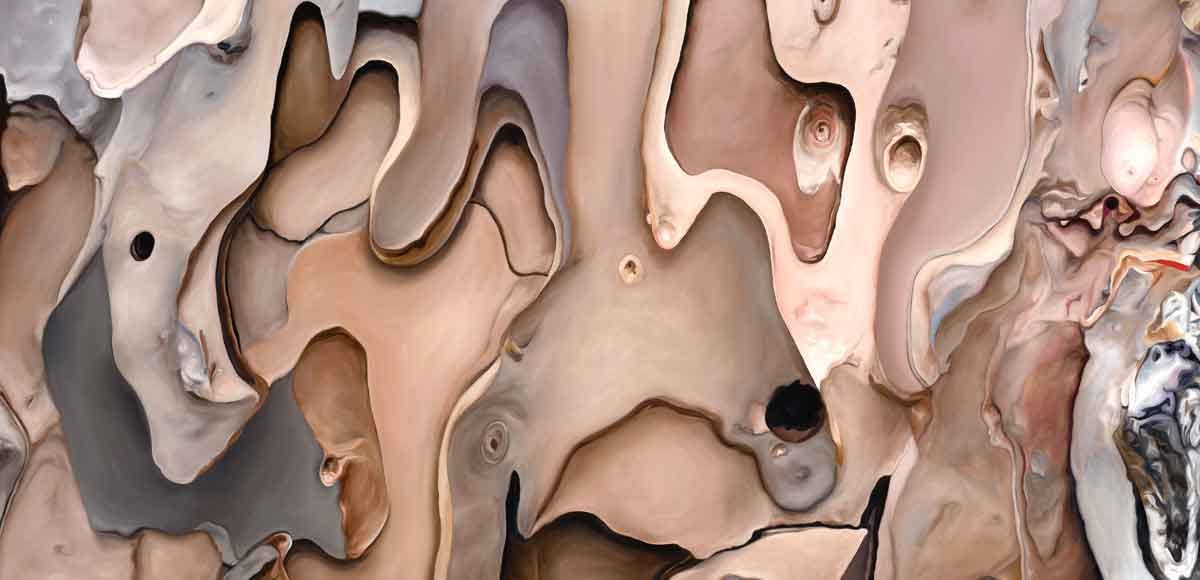So many holes in things—
those an armadillo leaves in a lawn,
a moth in wool,
rain in sandstone,
woodpeckers and sapsuckers
in a pine’s flaking tissues of bark.
Some holes we make,
some are drilled into us.
Our drive is to fix them (holes in our hearts,
holes in our bodies, holes that remain
when our children leave us—
a thing we are never prepared for.)
When we cut a tree we leave a hole.
When we cut a forest we leave a bigger hole.
And now
think of blades, sharp beaks, teeth,
things that rob flesh and thew.
The earth is forever
trying to repair the hole of our being.
What if
we thought of each hole
as a chalice? The clearcut a chalice,
our gobbling bodies chalices.
This old longleaf pine trunk, then,
is a table of chalices, and what if
each chalice was filled with wine,
or whiskey, or sap rising in a froth?
Then loss would be a drunken splendor,
a banquet of absence,
a feast—
yes, an intoxicating
feast of injury.
I’d drink, to honor the doing
and then the raw and speechless undoing.
About this Poem
Often when I am teaching a writing workshop I am sneaking time to write.
I wrote the poem above in an ekphrastic poetry workshop I led at the Georgia Museum of Art in Athens on November 18, 2022. During the workshop the viewers sat before the paintings of Kristin Leachman, hung for her show “Longleaf Lines.” Her paintings are images of pine bark, the view so close that the bark is almost abstracted. Leachman uses skin tones as her colors.
About fifteen people had signed up for the workshop, and we wrote together in a silent room—when people work together, a palpable energy takes hold, and that energy causes ideas and words to (silently) bounce around, until something new lands in your own head. I thank my fellow writers.
A few months later I reworked the poem during a writers co-working session, April 6, 2023, online via Zoom. I could see my writing friends working at their own desks and stations as I worked. I thank them for the energy their presence loaned me.
What is Ekphrastic Poetry?
“Ekphrasis” means “description” in Greek. Ekphrastic poetry describes a work of art in intense detail, adding to its meaning. One example is John Keats’s “Ode on a Grecian Urn.”
The Art of Place
I wrote about the Leachman exhibit in Athens, Georgia last year in this newsletter called “The Art of Place.” It contains a second ekphrastic poem from the Leachman exhibit.
Coming Up:
A Few Thoughts on Comparing Europe to the U.S.
A month ago I returned to the U.S. after spending three weeks in Europe, my first plane travel in 15 years. I have been working on an essay that contains observations I made after so many years of not flying and also on closely observing Europe as compared to the U.S.
For example, night-driving in Europe was not the growing problem that it is in the U.S. Europeans are not blinded by LED and HID (high intensity discharge) headlights, as they’re called, on U.S. roads. This is a huge problem that nobody is talking about at all.
I publish “Trackless Wild” on Wednesdays, and I’ll be dropping that essay in a few weeks.






My "hole epiphany" came while reading Doug Tallamy's Bringing Nature Home. Before, I had looked at spring's new leaves and bemoaned how they were already so eaten up by insects. Now I celebrate those holes as caterpillar food and caterpillars as bird food and butterflies.
Such a powerful poem, Janisse. Thank you. And yes ... the words that bounce silently around during a co-writing session. I thank you for the sessions you have facilitated and offered. I do my best writing in those. Can't wait until they resume.